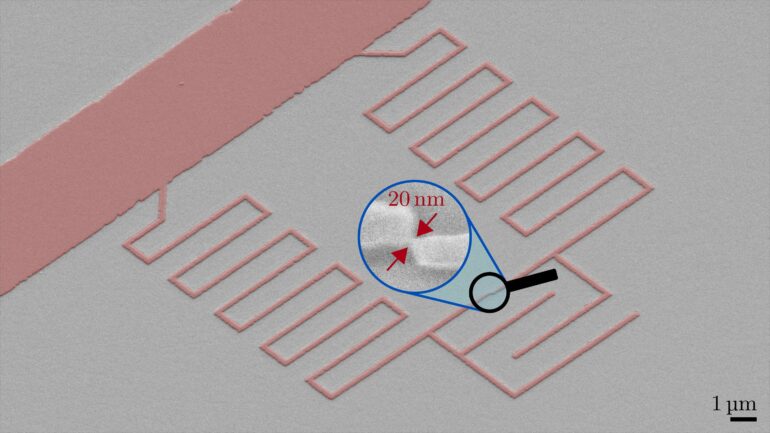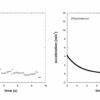Quantum computers can more rapidly process large amounts of data, because they carry out many computation steps in parallel. The information carrier of the quantum computer is a qubit. Qubits do not only possess the information of “0” and “1,” but also values in between. However, the difficulty consists in producing qubits that are small enough and can be switched quickly enough to execute quantum calculations.
Superconducting circuits are a very promising option. Superconductors are materials that have no electrical resistance at extremely low temperatures and, hence, conduct electrical current without any losses. This is important to maintain the quantum state of qubits and to connect them efficiently.
Gralmonium qubits: Superconducting and sensitive
KIT researchers have now succeeded in developing novel, unconventional superconducting qubits. “The core of a superconducting qubit is a so-called Josephson junction that serves to store quantum information. Here, we made a crucial modification,” says Dr. Ioan M. Pop from KIT’s Institute for Quantum Materials and Technologies (IQMT).
As a rule, such Josephson junctions for superconducting quantum bits are obtained by a thin oxide barrier separating two aluminum layers. “For our qubits, we use a single layer of granular aluminum, a superconductor made of aluminum grains of a few nanometers in size that are embedded in an oxide matrix,” Pop says. Then, the material self-structures in a three-dimensional network of Josephson junctions.
“It is fascinating to see that all properties of our qubit are dominated by a very small junction of 20 nm only. Consequently, it acts like a magnifying glass of microscopic material defects in superconducting qubits and offers a promising option for improvement,” Simon Günzler, IQMT, adds.
Qubits entirely made of granular aluminum
The progress achieved by the team is based on a previously tested approach using so-called fluxonium qubits. Parts of this predecessor version were made of granular aluminum, others consisted of conventional aluminum. Now, the entire qubits are made of granular aluminum. “And if a quantum circuit could be cut out of a metal film, this results in entirely new opportunities for industrial production by etching processes and extended application of qubits, for example in strong magnetic fields,” says Dennis Rieger from KIT’s Physikalisches Institut.
The paper is published in the journal Nature Materials.
More information:
D. Rieger et al, Granular aluminium nanojunction fluxonium qubit, Nature Materials (2022). DOI: 10.1038/s41563-022-01417-9
Provided by
Karlsruhe Institute of Technology
Citation:
A new qubit approach for more stable states for quantum computers (2023, January 12)



